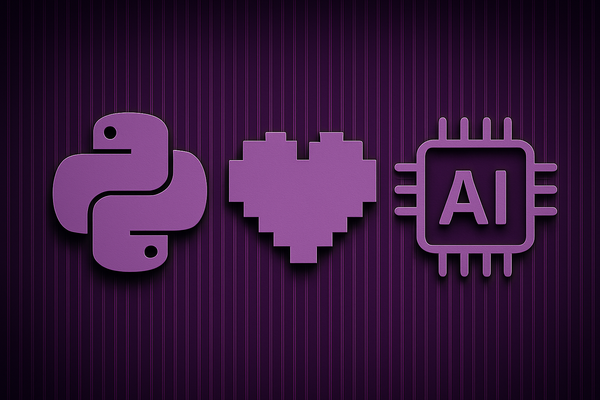🐍 Python, AI, and the MLOps Tinkerer's Toolkit

There was a time when Python was just my go-to for scripts, cleaning localisation data, or automating little tasks. But along the way, it quietly became the language of AI—and I’m thrilled.
Whether you're into MLOps-style workflows, tinkering with local models, fine-tuning prompts, or building self-hosted intelligence tools, Python offers an incredible playground. I’ve grouped some core libraries by purpose, added pip install commands, and linked each to its PyPI page so you can dive straight in.
📊 Data Manipulation & Analysis
NumPy
pip install numpy
Python’s foundational library for numerical computing. It gives you arrays and matrix operations that everything else is built on.
Use case: If you're doing anything vector-based—embedding comparisons, token-level analysis, or building scoring systems—you’ll want NumPy in your corner.
Pandas
pip install pandas
The go-to for working with structured data (spreadsheets, CSVs, API responses). Think: tabular data made easy.
Use case: Analysing TMX or bilingual corpora, parsing QA reports, or converting between formats.
📊 Visualization
Matplotlib
pip install matplotlib
Low-level yet powerful—great for custom plots of model metrics or scoring trends.
Use case: Create visualisations for training data, fine-tuning results, or error analysis.
Seaborn
pip install seaborn
Sits prettily on Matplotlib. Use it for clean visualisations of BLEU scores, clusters, or quality-estimation trends.
Use case: Make your graphs more informative and more beautiful with minimal effort.
🏋️♂️ Machine Learning
scikit-learn
pip install scikit-learn
Great for lightweight ML—fuzzy matching, classification, clustering, language detection, or simple quality estimation.
Use case: Train classic models on pre/post-edited segments or feature-based metrics for MT evaluation.
XGBoost
pip install xgboost
Serious structured-data modeling with speed—perfect for model-backed QA pipelines or prediction tasks.
Use case: Build high-performance models for scoring, anomaly detection, or structured classification.
👩🧬 Natural Language Processing
Gensim
pip install gensim
Handy for topic modelling, terminology extraction, semantic similarity, or corpora exploration.
Use case: Build semantic similarity models or run topic clustering across multilingual datasets.
Transformers (Hugging Face)
pip install transformers
State-of-the-art models—fine-tune or run BERT, T5, LLaMA, Whisper. Useful for translation, summarisation, semantic tagging, and more.
Use case: Drop-in access to powerful NLP models with options for self-hosting and prompt experimentation.
🧠 Deep Learning
TensorFlow
pip install tensorflow
Flexible and enterprise-ready; though heavier, it’s an option for robust backend pipelines or research deployments.
Use case: Create scalable deep learning models for complex language or vision tasks.
PyTorch
pip install torch
My personal favourite—great for research-style projects, custom fine-tuning, and prototyping MLOps pipelines.
Use case: Rapid experimentation with custom architectures, fine-tunes, and small-scale hosting.
📷 Computer Vision
OpenCV
pip install opencv-python
Vital for image-based workflows like OCR, visual QA, or automated inspection in localisation contexts.
Use case: Integrate OCR and layout detection into localisation QA or document automation.
Dlib
pip install dlib
Useful for face/object detection complementing OpenCV for visual data extraction.
Use case: Explore or experiment with image feature extraction or visual comparison pipelines.
📚 Final Thoughts: Python Is Home
Python has been my happy place long before "MLOps" became a buzzword. It's human-readable, hackable, and now the AI language hub.
For anyone in MLOps, LangOps, hybrid automation, or hobbyist AI—this toolkit gives you building blocks to explore, iterate, and own your intelligence workflows.
💡 Tinker as you build. Break things. Remix them. Learn by poking at them until they do something interesting. Python will help you glue it back together.
Happy tinkering! 🤖
Laura Hargreaves
Localisation engineer, language technologist and general tinkerer with opinions. I write about tech, localisation and life on the open web — chasing internet nostalgia and genuine connections online. Cat mum ×2. 🌍💜



